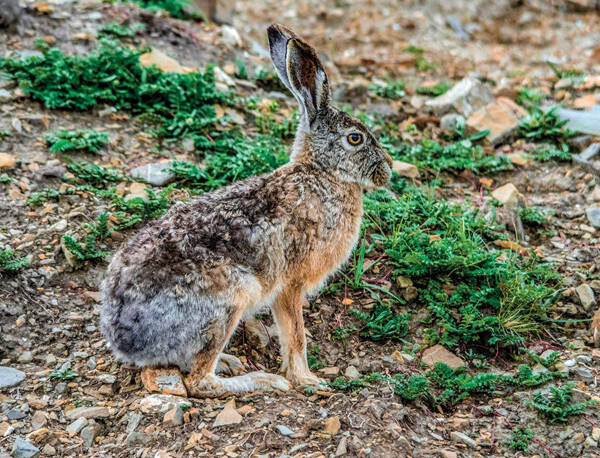Lepus sinensis
IUCN
LCBasic Information
Scientific classification
- name:Lepus sinensis
- Scientific Name:Lepus sinensis,Mountain rabbit, short-eared rabbit, woolly rabbit, hare
- Outline:Lagoiformes
- Family:Lagomorpha Leporidae Lepus
Vital signs
- length:400mm
- Weight:1000-1900g
- lifetime:
Feature
The ears are short, folded forward and only reach the front edge of the eye socket.
Distribution and Habitat
In China, it is mainly distributed in the southern coastal areas, including Jiangsu, Zhejiang, Guangdong, Fujian, Guangxi, and Taiwan. Abroad, it is marginally distributed in northern Vietnam.
The habitat of South China rabbits is very wide. In mountainous areas, they are mostly active in terraced fields, forest edge farming areas, and tea gardens. In hilly areas, they often live in uphill shrubs or weeds. In addition, orchards, nurseries, and farmland are also places where wild rabbits often appear.
Appearance
The individuals are smaller. The distinctive feature is short ears, generally no more than 80mm. The tail is short, generally no more than 55mm. The body color is very bright, reddish brown or yellowish brown. The hair is short and has guard hairs. Tail yellowish brown. The ventral surface of the body is beige. There are obvious black patches on the tips of the ears. There are ring patterns around the eyes, and the winter hair is lighter, light yellow, and mixed with black. The supraorbital process of the skull is small.
Details
The classification of South China rabbit is somewhat controversial. The Korean rabbit (Lepus coreanus) distributed on the Korean Peninsula was once included in this species. However, the Korean rabbit has a relatively longer tail.
South China rabbit is a pure herbivorous animal, eating various weeds, leaves, plant flower buds, fruits, seeds, vegetables, fruits, rhizomes and bean seeds, etc.

The South China rabbit is active both day and night. It likes to walk on footpaths, but hides in bushes and weeds during the day. It rarely enters caves without being disturbed. It usually does not have a fixed cave, but sometimes digs a shallow depression on the ground as a temporary shelter. When it lies in the cave, it is often difficult to find because its body color is very similar to the surrounding environment. Sometimes when it is two or three meters away from it, it suddenly rushes out of the cave and runs away quickly. When encountering an enemy, they usually flee up the mountain or along the hillside. Only when there is no road in the above directions will they run down the mountain.
The breeding period of South China rabbits is relatively long. They usually mate in early spring. Except for the coldest month in winter, they can breed in other seasons. They can breed 2-4 litters per year, with about 3-5 rabbits in each litter. The baby rabbits can live independently 30 to 40 days after they are born.

Listed in the 2008 IUCN Red List of Threatened Species ver 3.1 - Least Concern (LC).
The number of South China rabbits has recovered to a certain extent in China, but the factors that threaten its long-term survival still exist, mainly the reduction of habitats and hunting. The suitable habitat is decreasing day by day, and the habitat is divided, which restricts the survival and activities of the South China rabbit. Local residents have hunting rifles and hunt them arbitrarily in winter, which poses a great threat to the South China rabbit. The South China rabbit is one of the few wild animal resources that can adapt to the ecological environment of the suburbs of Shanghai and has a large number. This important biological resource should be protected and developed.







